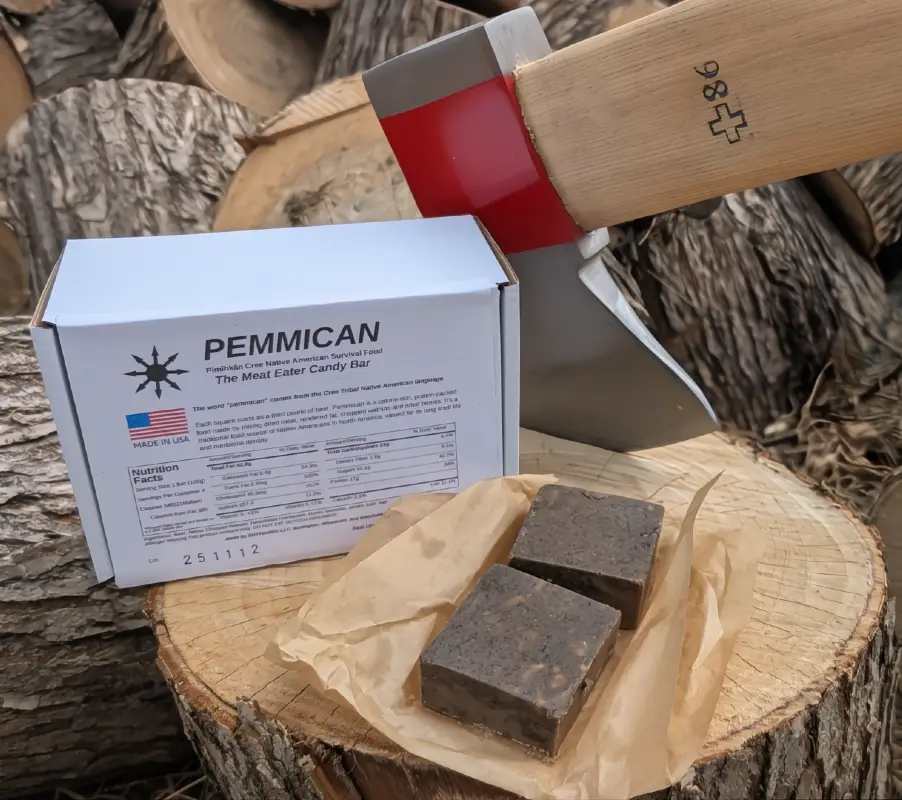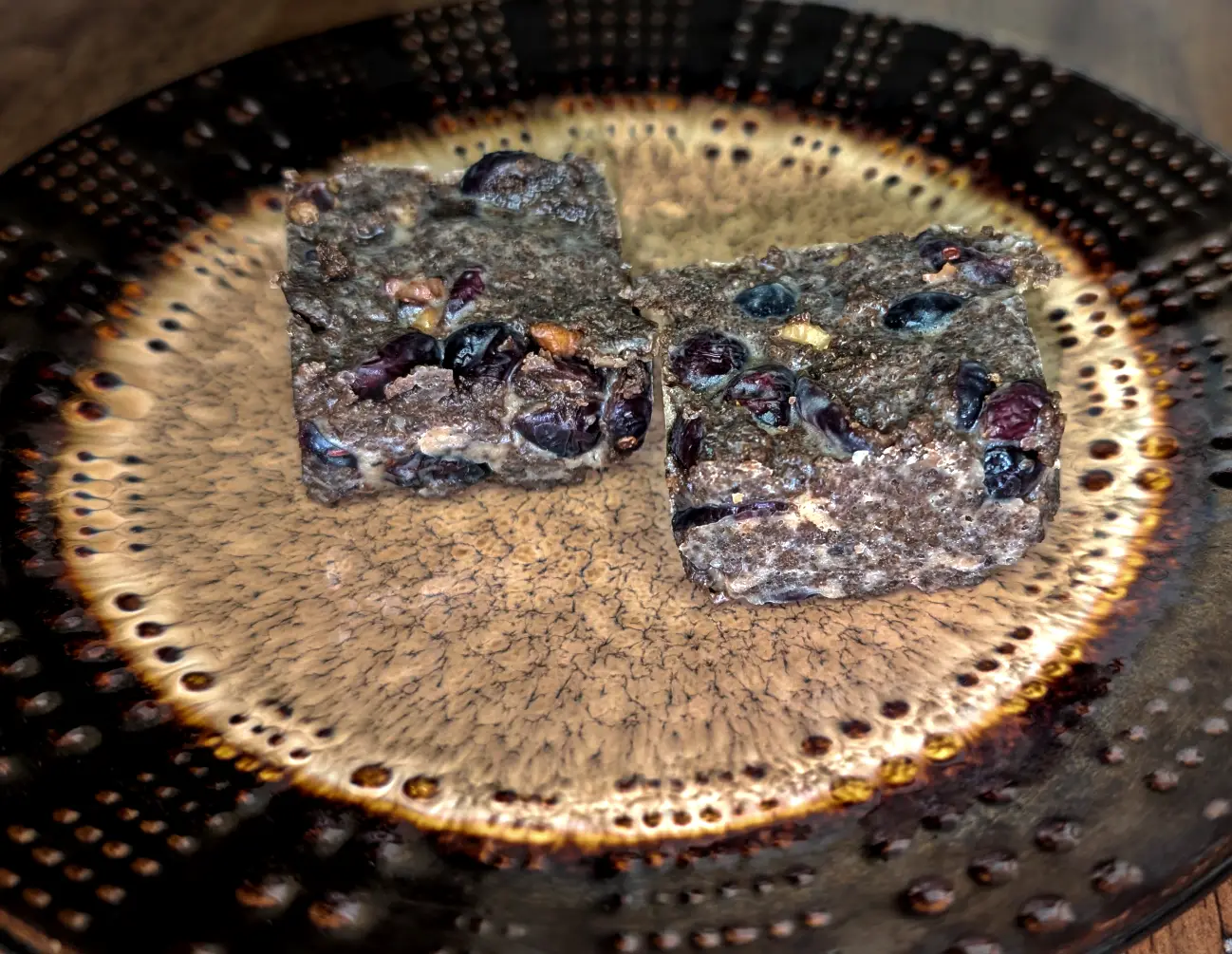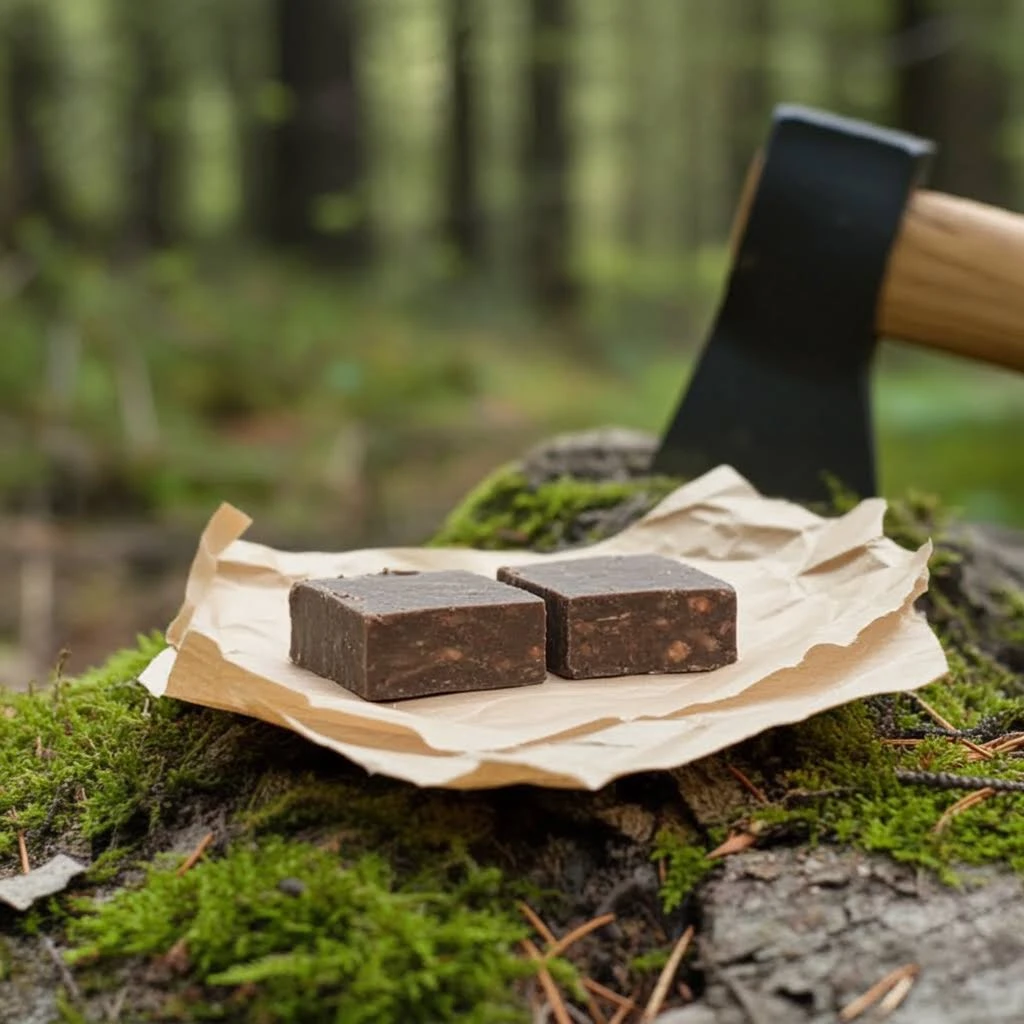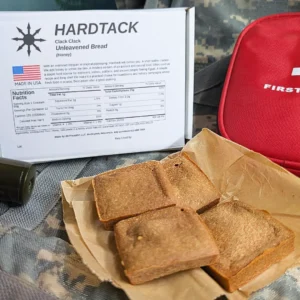What is Pemmican (Pimihkan) and why is it the perfect camping and emergency food?
-
Creation by Indigenous Peoples: Pimihkan (pemmican) was developed by Indigenous groups like the Cree, Ojibwe, and Métis, who relied on bison, elk, or deer as primary protein sources. They dried the meat, pounded it into a powder, mixed it with rendered fat, and often added dried berries (like saskatoon or chokecherries) for flavor and nutrition. The mixture was packed into rawhide bags or formed into cakes, offering a lightweight, long-lasting food that could sustain people for months.
-
Nutritional Value: Pimihkan was a survival staple due to its high caloric density (fat and protein) and resistance to spoilage, as the fat sealed out air and bacteria. Berries provided vitamins, like vitamin C, preventing scurvy.
-
Cultural Significance: Beyond sustenance, pimihkan was a trade item and a communal product, with preparation often involving entire communities. Recipes varied by tribe and region, with some using fish or moose instead of bison.
-
Lewis and Clark used pemmican as a food source when hunting was scarce. Adoption by Explorers (17th–18th Century): European fur traders, particularly those with the Hudson’s Bay Company and North West Company, encountered pemmican during the fur trade era. They quickly adopted it as a vital supply for long voyages, as it was more reliable than perishable foods. The Métis became key producers, supplying trading posts like Fort Garry (modern Winnipeg).
-
Pemmican War (1812–1816): The strategic importance of pemmican led to conflict in the Red River Colony (Manitoba). The Hudson’s Bay Company’s attempt to restrict pemmican trade to control the region sparked skirmishes with the Métis and North West Company, known as the Pemmican War, highlighting its economic and survival value.
-
Exploration and Arctic Expeditions (19th Century): Pemmican became a staple for Arctic and Antarctic explorers, including figures like Robert Peary and Roald Amundsen. Its compact, calorie-rich nature made it ideal for extreme conditions, though European versions often omitted berries, reducing nutritional balance.
-
Commercialization (19th–20th Century): By the late 1800s, pemmican was produced commercially for military and exploratory use, with canned versions emerging. However, these lacked the quality of traditional recipes, and the decline of bison herds due to colonial overhunting disrupted Indigenous production.
-
Military Use: Pemmican was used in both World Wars as an emergency ration, but advances in food preservation (canning, freeze-drying) reduced its necessity. Its reputation suffered from poor-quality commercial versions, often described as unpalatable.
-
Cultural Resurgence: In recent decades, Indigenous communities and food sovereignty movements have revived traditional pemmican recipes, emphasizing ancestral knowledge and sustainable practices. It’s now valued for its cultural heritage and nutritional benefits.
-
Survival and Outdoor Enthusiasm: Pemmican has seen a niche resurgence among survivalists, preppers, and outdoor enthusiasts. Modern recipes often adapt to available ingredients, like beef or commercial dried fruits, though purists advocate for traditional methods.
-
Commercial Availability: Small-scale producers and health food brands now market pemmican or pemmican-inspired bars, targeting paleo and keto dieters due to its high-fat, low-carb profile.
-
Pre-Contact: Indigenous development of pemmican as a survival food.
-
1600s–1700s: Adoption by European traders and voyageurs.
-
1812–1816: Pemmican War underscores its economic importance.
-
Late 1800s: Commercial production peaks, then declines with bison extinction and new preservation technologies.
-
2000s–Present: Revival in Indigenous cuisine and niche markets.













Joe Ballard –
Better than the last time I tried it. this isn’t bad at all.
Rob J –
Wow. It really does taste good.
Justin Swanson –
I bought 2 boxes. I’m taking this on my backpacking trip to Rae Lakes. It is pretty good.
Tyler –
Really good. I’m ordering more for my backpacking trip
caswa48 –
Honestly the taste far exceeded my expectations. It tasted great and I will be order more soon!